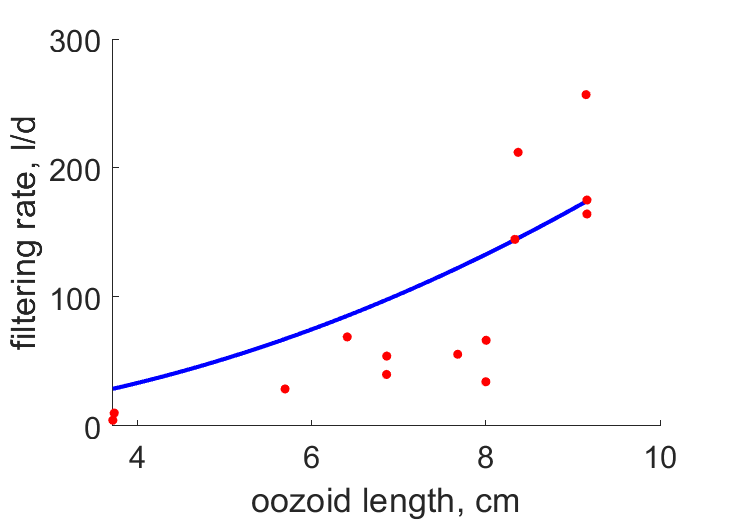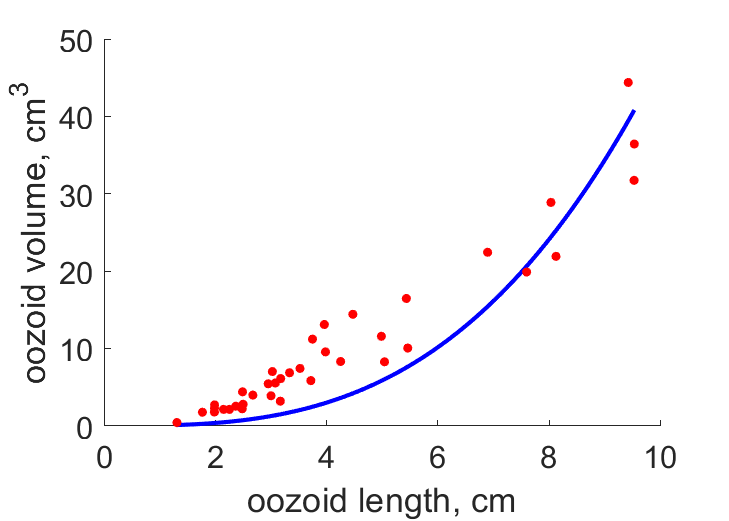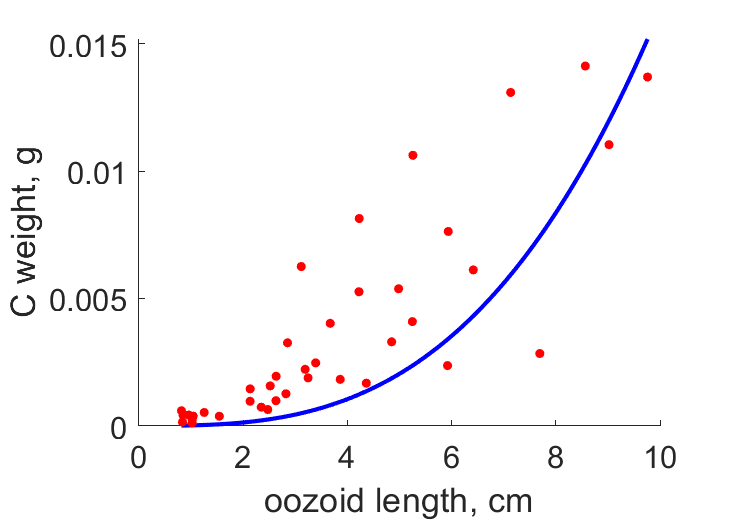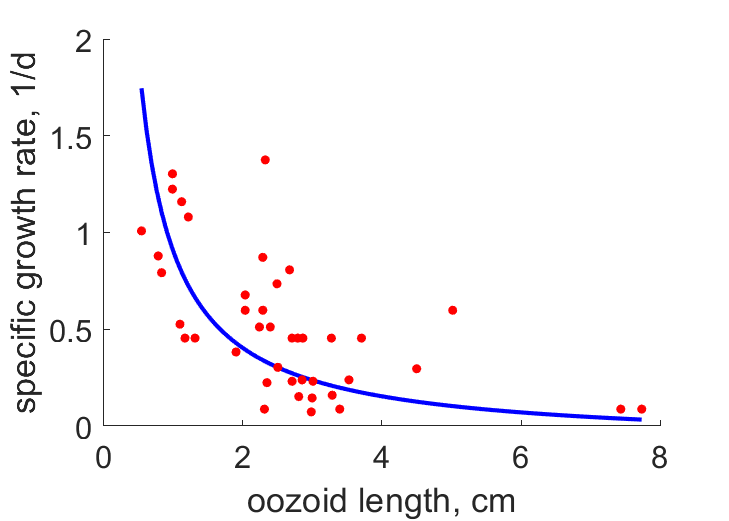Predictions & Data for this entry
| Model: std | climate: MB, MC | migrate: Mo | phylum: |
| COMPLETE = 2.8 | ecozone: MP | food: biP | class: |
| MRE = 0.243 | habitat: 0jMp, jiMb | gender: Hsf | order: |
| SMSE = 0.157 | embryo: Mp | reprod: Aa | family: |
Zero-variate data
| Data | Observed | Predicted | (RE) | Unit | Description | Reference |
|---|---|---|---|---|---|---|
| ax | 4 | 4.611 | (0.1527) | d | age at release | MadiPurc1992 |
| tp | 8 | 29.54 | (2.692) | d | time since birth at puberty | MadiPurc1992 |
| am | 40 | 39.95 | (0.001233) | d | life span | guess |
| Lb | 0.26 | 0.2438 | (0.06215) | cm | body length at birth of oozooid | MadiPurc1992 |
| Lx | 1.7 | 1.427 | (0.1605) | cm | body length at release of oozooid | MadiPurc1992 |
| Lp | 5 | 6.425 | (0.2851) | cm | body length at puberty of oozooid | MadiPurc1992 |
| Li | 10 | 10.3 | (0.03018) | cm | ultimate oozoid length | MadiPurc1992 |
| WCx | 0.00058 | 2.368e-07 | (0.9996) | g | C weight at release of oozoid | MadiPurc1992 |
| WCp | 0.00472 | 0.004332 | (0.08213) | g | C weight at puberty of oozoid | MadiPurc1992 |
| WCi | 0.01583 | 0.01786 | (0.1279) | g | ultimate C weight of oozoid | MadiPurc1992 |
| Wwi | 44 | 51.47 | (0.1698) | g | ultimate wet weight of oozoid | MadiPurc1992 |
| Ri | 5 | 4.947 | (0.01062) | #/d | maximum reprod rate | MadiPurc1992 |
Uni- and bivariate data
| Data | Figure | Independent variable | Dependent variable | (RE) | Reference |
|---|---|---|---|---|---|
| LF |  | oozoid length | filtering rate | (0.4512) | MadiPurc1992 |
| LJO |  | oozoid length | respiration rate | (0.4787) | MadiPurc1992 |
| LV |  | oozoid length | oozoid volume | (0.3953) | MadiPurc1992 |
| LWC |  | oozoid length | C weight | (0.5504) | MadiPurc1992 |
| LWd |  | body length | dry weight | (40.2) | MadiPurc1992 |
| Lr |  | oozoid length | specific growth rate | (0.472) | MadiPurc1992 |
| tL |  | time since birth | oozoid length | (0.1957) | MadiPurc1992 |
Pseudo-data at Tref = 20°C
| Data | Generalised animal | Cyclosalpa bakeri | Unit | Description |
|---|---|---|---|---|
| v | 0.02 | 0.05886 | cm/d | energy conductance |
| kap | 0.8 | 0.9993 | - | allocation fraction to soma |
| kap_R | 0.95 | 0.95 | - | reproduction efficiency |
| p_M | 18 | 9195 | J/d.cm^3 | vol-spec som maint |
| k_J | 0.002 | 0.002 | 1/d | maturity maint rate coefficient |
| kap_G | 0.8 | 0.8 | - | growth efficiency |
Discussion
- Dry weights were ignored because of the large contribution of salt
- Age at puberty and C weight at birth were also ignored because of consistency
- Specific filtering rate is very high because structural volume is very small
Facts
- Solitary generation salps would produce asexually about 170 aggregate generation offspring during their lifetime, and each aggregate blastozooid produces one solitary (Ref: MadiPurc1992)
- Aggregates grow to reproductive sizes in 14 d (Ref: MadiPurc1992)
- The aggregate generation is protogynous hermaphroditic; external fertilisation (Ref: MadiPurc1992)
- From solitary to solitary generation takes 24 d (Ref: MadiPurc1992)
Bibliography